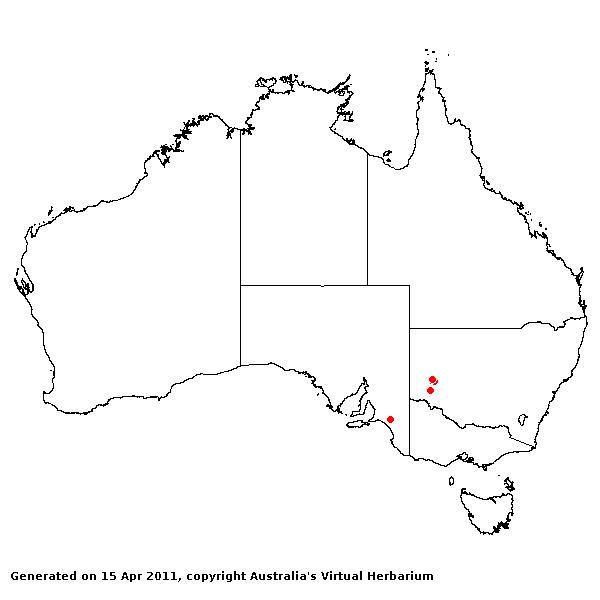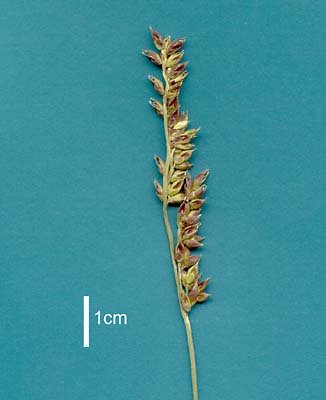Echinochloa lacunaria (F. Muell.) Michael & Vickery. Telopea 1: 44 (1975).
Classification. (GPWG 2001) : Subfamily Panicoideae. Paniceae.
Basionym and/or Replacement Name: Panicum lacunarium F. Muell., Trans. & Proc. Philos. Inst. Victoria 1854–1855: 47 (1855).
Type of Basionym or Protologue Information: "Around the Murray lagoons.", no collector cited.
Key references (books and floras): [2002] D.Sharp & B.K.Simon, AusGrass, Grasses of Australia, [2008] S.W.L.Jacobs, R.D.B.Walley & D.J.B.Wheeler, Grasses of New South Wales (227).
Illustrations: [2008] S.W.L.Jacobs, R.D.B.Whalley & D.J.B.Wheeler, Grasses of New South Wales, 4th edn (227).
Habit. Annual. Culms erect, stature slender to delicate, 45–90 cm tall, 2–4 -noded. Mid-culm nodes glabrous. Leaf-sheaths smooth, glabrous on surface. Ligule absent. Leaf-blades 9–40 cm long, 4–14 mm wide. Leaf-blade surface smooth, glabrous.
Inflorescence. Inflorescence compound, a panicle of racemes. Racemes few, erect, 2–6 cm long. Central inflorescence axis 8–12 cm long.
Spikelets. Spikelets pedicelled. Fertile spikelets 2-flowered, the lower floret barren (rarely male), the upper fertile, comprising 1 basal sterile florets, comprising 1 fertile floret(s), without rachilla extension, elliptic or ovate, dorsally compressed, 4.3–6 mm long. Rhachilla internodes elongated between glumes.
Glumes. Glumes dissimilar, thinner than fertile lemma. Lower glume ovate, membranous, without keels, 3–5 -nerved. Lower glume apex mucronate. Upper glume elliptic, 4.1–4.9 mm long, membranous, without keels, 5 -nerved. Upper glume surface asperulous. Upper glume apex mucronate. Florets. Basal sterile florets 1, male or barren, with palea. Lemma of lower sterile floret 100 % of length of spikelet, membranous, 5–7 -nerved. Fertile florets bisexual.
Fertile lemma 3.4–4 mm long, without keel, 5 -nerved. Lemma apex mucronate. Anthers 3. Grain 2.2–2.3 mm long.
Continental Distribution: Australasia.
Australian Distribution: South Australia, New South Wales.
South Australia: Murray. New South Wales: South-Western Plains, South Far Western Plains.
Notes. The lack of hairs or distinct scabrosities on the spikelet and inflorescence branches is diagnostic. It is morphologically most similar to E. turneriana and may be nothing more than an ecotypic variant.
Native. Collected from the Menindee area; uncommon. In temperate sub-humid woodlands, arid and semi-arid low woodlands, and eucalypt shrublands. Flowers Apr.-Sept.



